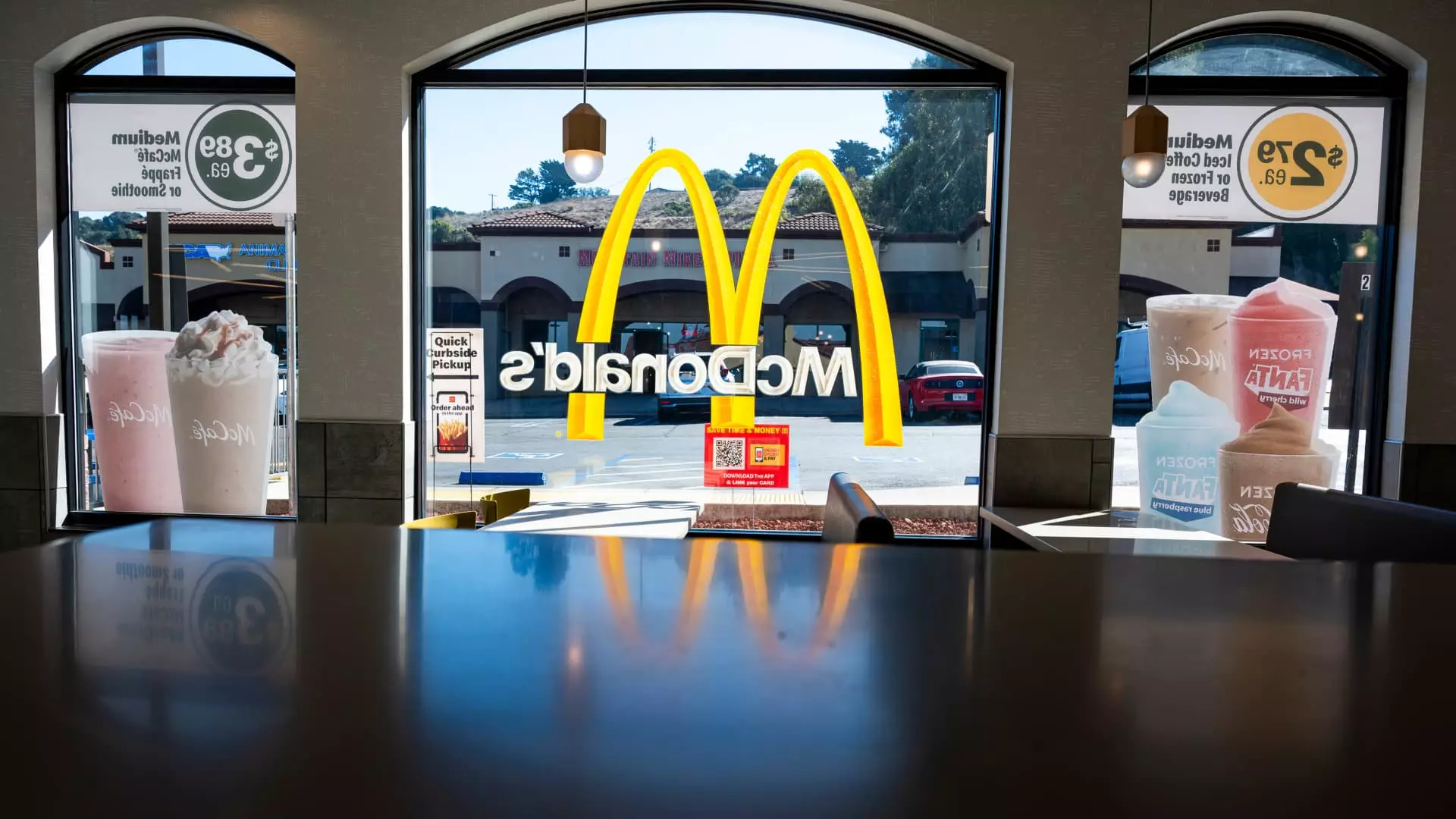As restaurant executives cautiously navigate through 2025, they have encountered a wide array of challenges that have tested their resilience and adaptability. The year commenced with harsh weather conditions, including frigid temperatures and devastating wildfires, which hindered consumer dining habits and dampened sales figures. Notably, chains like Burger King and Popeyes under the umbrella of Restaurant Brands saw a resurgence in foot traffic towards the close of 2024, as enticing value propositions coaxed back diners who had previously opted for home-cooked meals. Yet, the landscape shifted dramatically in January, prompting industry leaders to reassess their projections.
Despite a slight uptick in net sales across the fast-food segment—a 3.4% increase compared to January of the previous year—this figure paled in comparison to the preceding month’s performance which boasted a 4.9% increase. The trend appears to reflect a broader caution among consumers, questioning their spending habits and looking for assurance in the quality and value of their meals.
Doug Fry, President of Subway U.S., highlighted the prevailing wariness among consumers. Many are waiting on the sidelines, anxiously monitoring economic stability while being reluctant to compromise on quality and portion sizes. This cautious consumer behavior can have a ripple effect on the broader restaurant industry, as the demand hinges on the willingness of patrons to return to dining establishments without reservations. This sentiment was evident in the declining traffic for both breakfast and lunch periods during January, shedding light on a potentially persistent trend.
Looking ahead, many restaurant executives are optimistic that sales growth will eventually rebound as comparisons to last year’s downturn begin to ease. Initial months are traditionally marked by colder weather and rising consumer caution, but as spring approaches, a lift in consumer confidence could catalyze a notable recovery for the industry.
Weather-Related and Economic Influences
While January is typically synonymous with winter weather challenges, the wildfires in Los Angeles compounded these issues, significantly impacting several restaurant brands. For instance, Chipotle Mexican Grill cited a loss of 4% in year-over-year traffic growth attributed to these unforeseen events. This sort of disruption reflects how external environmental factors can potently dictate restaurant performance.
Additionally, lingering uncertainties following political shifts, such as the new presidential administration, have posed an extra layer of complexity to financial forecasts. Chipotle’s projections depict a subdued expectation for first-quarter sales, with similar concerns echoed by other restaurants facing comparisons to previous successful promotions. Stocks reacted negatively to these forecasts, displaying investor anxiety over the future of restaurant sales.
Despite ongoing adjustments within the operational framework of numerous restaurant chains, many remain unaffected in terms of their immediate forecasts by proposed tariffs and trade wars. For instance, Chipotle, which sources a significant portion of its avocado supply from Mexico, downplayed impending tariffs’ impact on food costs. Meanwhile, McDonald’s and Wendy’s also omitted any adverse effects from new tariffs in their outlooks. Nevertheless, underlying consumer concerns about price increases loom large, exacerbated by rising inflation rates and a palpable dip in consumer sentiment.
Recent statistics reflecting consumer sentiment hitting a seven-month low underscore the growing anxiety among households. As inflation in January reportedly outpaced expectations—particularly within the realm of dining out—restaurants must engage in proactive measures that meet their clientele’s needs without compromising quality.
Prospects for Recovery and Future Growth
Despite the early setbacks, many fast-food giants, including McDonald’s, anticipate gradual recovery as conditions stabilize. Leaders within the company are optimistic that, should the economic environment improve, particularly for lower-income consumers, they could yield significant benefits compared to their competitors. This expectation can inspire confidence and reinvigorate strategies for customer engagement and commerce.
Additionally, brands like Starbucks face considerable hurdles, as a decline in same-store sales for several consecutive quarters pushes the company to reassess its outlook. The suspension of forecasts for fiscal 2025 reveals the gravity of their situation as they grapple with consumer preference shifts towards alternative coffee sources.
While 2025 has brought significant challenges for the restaurant industry, the potential for recovery embodies resilience and adaptability. The interplay of external environmental factors, consumer behavior, and economic uncertainties will dictate the industry’s future, pushing restaurant brands to innovate and realign their business models to thrive amidst evolving circumstances. As the year progresses, hopes are high that restaurants will recapture consumer enthusiasm and drive sustained growth.

